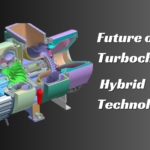Plastic Injection Moulding: The Basics
Plastic injection moulding is one of the most popular and widely used manufacturing processes for making plastic products, most commonly where the same part is being created thousands or even millions of times in succession.
You may not be familiar with the companies behind it, such as industry veteran Carmo A/S, but they offer serious expertise in the production of a variety of components. Typical examples include toys, automotive parts, medical devices, packaging materials, electronic parts, and consumer goods, such as kitchenware and appliances. It can also be used to create custom parts for industrial, commercial, and consumer applications, like gears, fasteners, pipe fittings, structural parts, and housings.
How does it work?
The process starts with melting the plastic material, usually pellets, and then injecting it into a mould cavity. The cavity is formed using two hardened tool steel dies which have been machined into shape and work similarly to an injection machine. Once the molten plastic has been injected into the mould, it cools and hardens to the configuration of the cavity. After cooling, the part can be ejected from the mould and sent on for further processing, such as painting or plating, if required.
How long does it take?
The time it takes to make a product using plastic injection moulding depends on several factors, such as the complexity of the part, the size of the mould, and the material used. Generally speaking, it can take anywhere from a few seconds to several minutes for each cycle. It also depends on how many parts are being produced in one cycle and how many cycles are needed to complete the entire production run. Moreover, if any modifications need to be made during manufacturing, or if there is an issue with the mould itself, this can lengthen the overall duration.
What are the benefits?
Plastic injection moulding offers numerous advantages, such as cost-effectiveness, high accuracy, repeatability, versatility, and speed. It is also environmentally friendly as it uses recycled plastics, which reduces waste and pollution. Additionally, this process can be used to make complex shapes with intricate details in a single operation, with consistent quality and strength that are resistant to corrosion and wear-and-tear. On top of this, the use of plastic materials allows for greater design flexibility compared to other materials, like metal or wood. Finally, for manufacturers, it is highly efficient in terms of production time and labour costs.
What does the future look like?
Plastic injection moulding technology is constantly evolving and improving, with new advancements being made every day, such as improved materials that are better suited for specific applications. Automation will also play a major role, allowing for faster production times and higher-quality products. In addition, 3D printing is becoming increasingly popular in the industry, making it possible for more complex designs to be created quickly and easily. Finally, advances in computer-aided design (CAD) software will allow engineers to devise even more intricate parts with greater accuracy than ever before.
All of these developments will help make plastic injection moulding an even more powerful tool for manufacturers around the world.

















